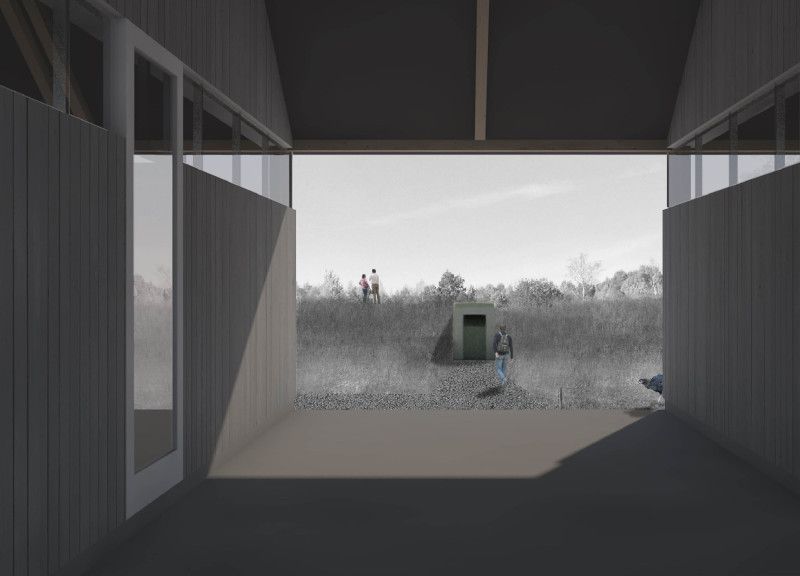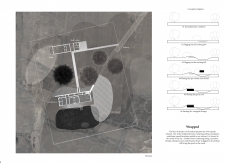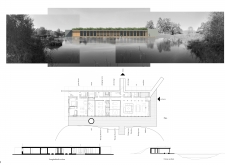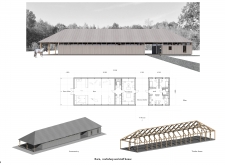5 key facts about this project
The overarching representation of this project lies in its commitment to sustainability and user well-being. Built with respect for the natural topography, the design minimizes disruption to the landscape while enhancing the experience of those who use it. By harmonizing architectural needs with environmental considerations, "Wrapped" exemplifies a modern approach to architecture that prioritizes both functionality and ecological responsibility.
At the heart of the project is its layout, which strategically delineates diverse zones tailored to specific purposes. The guesthouse, positioned for optimal views of the nearby pond, provides a tranquil retreat for visitors. This thoughtful placement not only maximizes the aesthetic experience but also contributes to a sense of privacy and seclusion.
Adjacent to the guesthouse, the staff and office area are intentionally located near the parking facilities, streamlining accessibility for personnel while maintaining the integrity and quietude of the guest spaces. This functional design facilitates an efficient workflow for staff members, positioning the project as a practical model for similar architectural endeavors.
Another key element of the design is the spa, which is uniquely embedded within an existing hill. This innovative approach serves multiple functions; it lessens the visual impact of the built structures, reinforces thermal performance through the natural insulation properties of earth, and fosters a connection between the interior spaces and the landscape. The green roof further enhances this connection, promoting biodiversity and offering natural insulation, which aligns with the design's sustainability ethos.
The material palette selected for "Wrapped" is another notable aspect of the project. Utilizing timber for structural elements imparts a warm and inviting atmosphere, fostering a connection with nature. Composite siding ensures durability and resistance to weather, while large glass elements strategically placed throughout the design allow for abundant natural light, creating an inviting environment filled with views of the serene landscape.
Interior spaces have been designed to reflect a commitment to openness and fluidity. The positioning of therapy rooms and communal areas allows occupants to engage with the soothing external environment, reinforcing the project's emphasis on relaxation and wellness. This seamless interaction between indoor and outdoor spaces is a vital aspect of the architectural design that promotes a sense of calm and connection to nature.
The unique design approaches evident in "Wrapped" are not merely aesthetic choices; they represent a broader philosophical commitment to creating spaces that enhance quality of life while respecting natural ecosystems. The integration of structures within the landscape and the choice of materials reflect a profound understanding of the environment, addressing both human needs and ecological considerations.
In summary, "Wrapped" is an architectural project that serves as a model of sustainable design. Its careful integration within the landscape, thoughtful material selection, and focus on user experience combine to create a harmonious and functional environment. Readers interested in exploring the architectural plans, sections, designs, and ideas should delve deeper into the project presentation. Engaging with these elements can provide valuable insights into how "Wrapped" exemplifies modern architectural principles while emphasizing the importance of connecting built environments with their natural contexts.


























